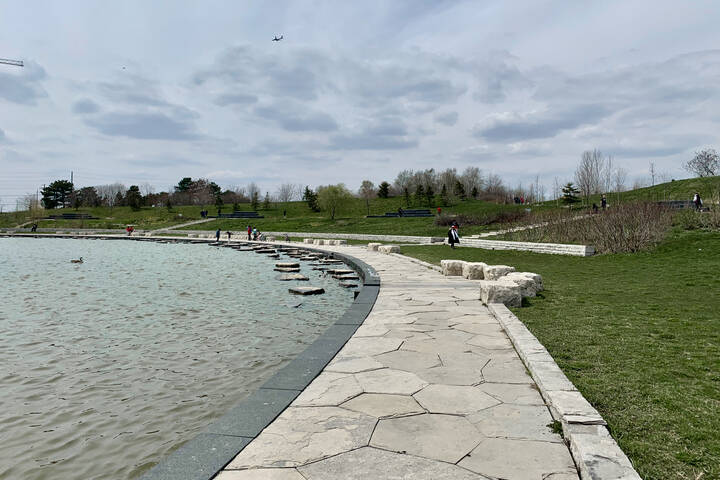
Extreme weather leaves haunting natural ice sculptures along Ontario lakefront
While most of southern Ontario battled out extreme sub-zero temperatures over the past week, Mother Nature settled in on one lakefront community during the deep freeze to create a natural art installation.
As a result of the ice-cold temperatures, gothic ice sculptures — which some say look like they were pulled straight out of a Lord of the Rings movie — formed along the Lake Erie waterfront in Port Stanley.
The Majestic nature made ice formations Lake Erie conjured @weathernetwork @MurphTWN @KMacTWN @LakeErieNorth @StormhunterTWN @RachelSchoutsen @WxMelinda21 @martaczur @CBCNews @CTVToronto @CTVLondon @MattHamelTV @gtaweather1 @nadinehp4 @ThatMetGirl @NicoleKarkic #ShareYourWeather pic.twitter.com/kjwI5vy0Ne
— Ann Maurie (@LittleBeachLady) January 15, 2024
The naturally occurring and intricate "ice art" is the result of water spray being whipped up onto the pier from the lake, which quickly freezes and builds up to reveal the stunning ice formations, according to The Weather Network.
Does it get any more beautiful at sunrise? 🌞🔥🌞@weathernetwork @MurphTWN @KMacTWN @LakeErieNorth @martaczur @NicoleKarkic @WxMelinda21 @StormhunterTWN @RachelSchoutsen @cstclair1 @jwhittalTWN @WxMelinda21 @StormsOnErie @LHreports #ShareYourWeather #sunrise pic.twitter.com/oL20d2XXAe
— Ann Maurie (@LittleBeachLady) January 22, 2024
Port Stanley photographer, Ann Maurie, recently uploaded a series of photos and videos that show the short-lived and jaw-dropping ice formations in all their glory.
Super BEAUTIFUL BALL OF SUNRISE 🔥☀️🔥 ( and a icy dipper ❄️) @weathernetwork @MurphTWN @KMacTWN @NicoleKarkic @martaczur @ThatMetGirl @LakeErieNorth @MattHamelTV @StormhunterTWN @weatherchannel @WxMelinda21 @RachelSchoutsen @CTVLondon #ShareYourWeather pic.twitter.com/IZkiIkGxwJ
— Ann Maurie (@LittleBeachLady) January 22, 2024
Back in December 2022, hundreds of tourists poured into the lakefront community to witness the rare winter sculptures up close and personal following another icy storm that sent temperatures plummeting.
While the ethereal sculptures have resurfaced once again, they likely won't be around much longer, with warmer temperatures having already returned to the community.
Feeling the cold 🥶 @weathernetwork @MurphTWN @WxMelinda21 @RachelSchoutsen @StormhunterTWN @cstclair1 @LakeErieNorth @jwhittalTWN @NicoleKarkic @dinicTWN @martaczur @KMacTWN #ShareYourWeather pic.twitter.com/kt4ILpMQZ2
— Ann Maurie (@LittleBeachLady) January 17, 2024
However, with winter far from over, there's still some hope that these haunting ice sculptures will pop up once again.
Latest Videos
Latest Videos
Join the conversation Load comments







